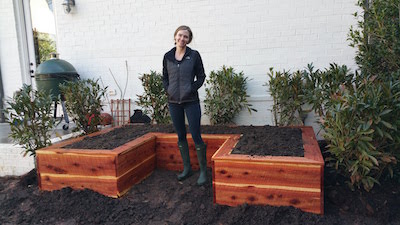Local Pros Share Tips for Starting Seeds Indoors
 Friday, January 18, 2019 at 9:06AM
Friday, January 18, 2019 at 9:06AM 
Every grower dreams of watching tiny seeds sprout and grow up to be sturdy, compact seedlings - the kind with that unmistakable vigor, that are eager to brave blustery spring days outside in the garden.
But often starting seeds at home can be, well… iffy, and results often fall short of the robust seedlings your local nursery has for sale. Just follow these tips from local experts, and you’ll be well on your way to starting seeds like a pro.

Supplement Sunlight with Llorescent Lighting
Often, a sunny window inside your house will have just enough warmth and light to germinate and sprout seeds, but not enough direct sunlight to grow the kind of compact, robust seedlings. In fact, window sill-seedlings frequently turn out to be anemic looking, spindly sprouts, worn thin from chasing disappearing sunlight. The solution is supplemental florescent lighting.

“Newly sprouted seedlings will benefit from up to 18 hours of direct light,” explains Alan Corder, owner of American Beauty Garden Center. “Most people sow seeds indoors during winter for a spring garden, but the days are still too short.” Broad-spectrum florescent lights are very well suited to starting seeds indoors because they produce a tremendous amount of light lumens compared to the amount of electricity used.

Florescent lights bulbs also emit very little heat compared to other types of artificial lighting, which means you can place the light just a few inches above the surface of the soil or the plastic dome covering the tray, and not scald the seedlings. In fact, placing the light just a few inches above the tiny sprouts as soon as they pop up, is key to achieving compact, stocky growth. Use a plug-in timer to control the grow light, and remember to mount your light on an adjustable chain or pulley system so it can be easily raised as your seedlings grow.
Maintain Ideal Soil Temperature
“Remember that seed germination is triggered by temperature, not light,” says Nick Waddell, co-owner of Rountree Plantation Nursery. “That means that, even with supplemental lighting, if your grow area is set up in a greenhouse, garage, or another cold environment, you’ll need to place a heat mat underneath the seedling tray to keep the soil warm.” Between 75-80 degrees works well for germinating most varieties, and seedling heat mats can be controlled with a thermostat.

Keep soil evenly moist
“Always start seeds in a light, sterile growing medium designed specifically for seed starting and propagation,” Nick continues. “ Wet the soil before planting, aiming for a consistency that’s moist but not waterlogged - about like the dampness of a wrung out sponge.” Seeds can rot in soggy soil, of simply fail to germinate in soil that’s too dry. Nursery trays with drainage holes are the way to go, and versions with many small individual capsules are ideal for the home gardener because the entire garden can usually be seeded in just one or two trays.

And with supplemental lighting above your seedlings and a heat mat underneath, it’s likely that the soil will begin to dry out before the seeds have sprouted and are ready to transplant. So be sure to check your seedlings daily, wetting the the soil as needed with a spray bottle, to keep it evenly moist. Placing a clear plastic dome over your seedling tray helps retain moisture, but it’s still just as important to check the soil frequently, adding water as needed.

Preparation & Timing
“Some varieties just don’t transplant well, and are best seeded directly into your garden,” adds Nick Waddell. “Root crops like carrots, parsnips, and radishes, for example. Also, take careful note of the germination period of each seed variety you have, and time your sowings accordingly. Sow varieties with a germination time of weeks - like peppers - well ahead of ones that can pop up in as little as a few days, like squash, cucumbers or beans.”
“We’ve found it beneficial to pre-soak seeds in an organic B-1 solution like Thrive Alive, before planting,” adds Alan Corder. “Beans should always be treated with inoculant, and certain seeds will germinate better when gently scored with a knife before sowing.”











